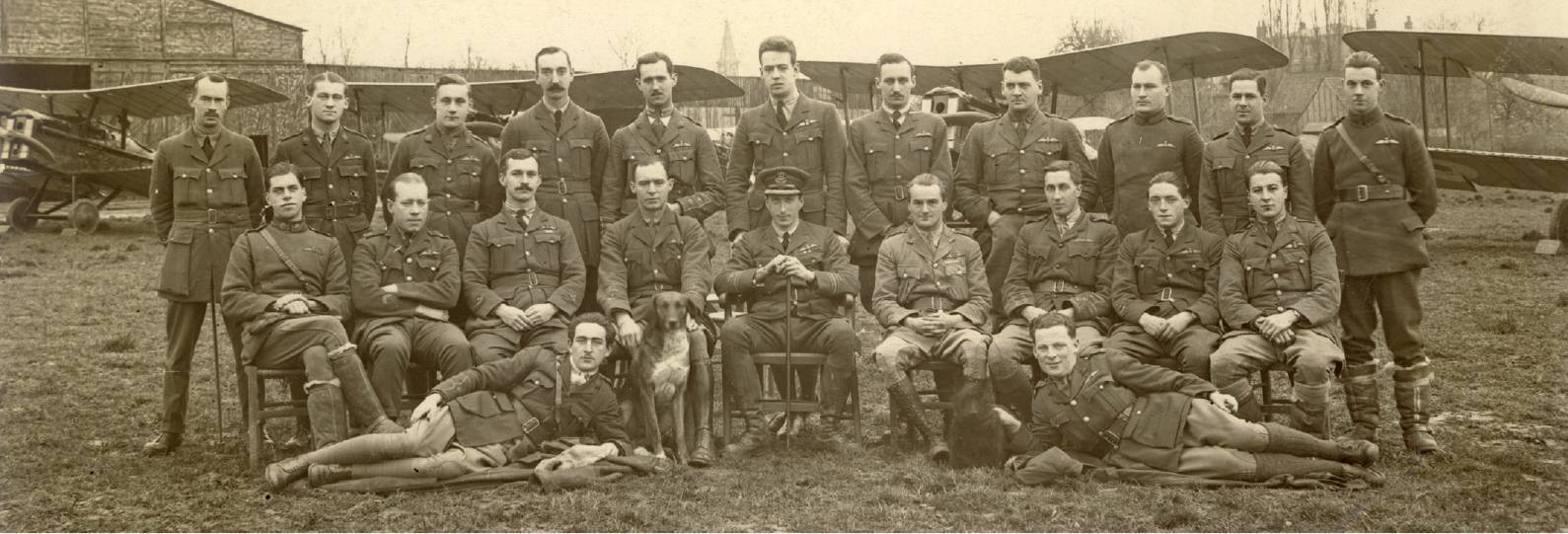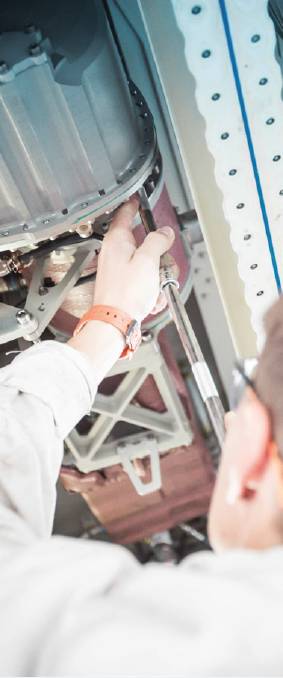Book Reviews
Book Reviews
By Mark C Wilkins
Pen & Sword Aviation, Pen & Sword Books, 47 Church Street, Barnsley, S Yorkshire S70 2AS, UK. 2019. x; 178pp. Illustrated. £19.99. ISBN 978-1-5267-312-3
 Officers of No24 Squadron RAF in France, 29 November 1918. RAeS (NAL).
Officers of No24 Squadron RAF in France, 29 November 1918. RAeS (NAL).
This is an interesting book but, as with all books written by historians, no matter how eloquent and factual, there is always the omission of the feeling of real experience. By that I mean there are people alive today with whom the author could have discussed and compared the past with the present. Those first pilots had to battle with their machines as well as the enemy. Today, the pilot is an integral part of the machine, the fatigue may have been produced in a different way but the end result is always the same.
That said, the book is a fascinating collection of narratives about the ‘Aces’ of the Great War and how that war took its toll in various ways on them, before most of them sadly perished.
One of the common denominators throughout is the effect of ‘fear’. This was not only generated by the constant concern about the integrity of the plane you were flying but the fear of not coming back. Those of us who have experienced ongoing day after day fear, know how draining and fatiguing it can be, even if nothing happens, except now and again. This type of fatigue is common in a number of walks of life even today and, unless it is managed by sympathetic and understanding people, it can have fatal results. The signs and symptoms do vary from person to person, as the author well describes.
The early cases were not well managed as they were not understood. There was always the concern that your fatigue would be interpreted as cowardice or lack of moral fibre and so these people soldiered on, getting more fatigued until they were so chronically fatigued some of them had to be stopped. The wise commander would see this but, as was often experienced in those telling times, the commander was as fatigued as the men he flew with, sometimes with tragic results.
What have we learnt from these early aviators and their problems? For a start, the machines today are far more reliable but, on crossing water for the first time, low level, the fear of something going wrong can trouble the most modern mind until landfall is made. For many of us it takes many hours for that fear to diminish but we now understand it, and can teach others about how to manage it. We try to manage combat flying hours into sensible manageable rotas but, when the pressure is on, and the manpower reduced, even the most well organised system can be fractured.
Those lessons from WW1 were applied in WW2 but ran into the same problems when the manpower was reduced, and the task load increased. This was very evident during the Battle of Britain. The one-to-one combat fear was just the same.
Today, we have a better selection system, hopefully preventing those of a weak disposition, from entering flying training. Modern air-to-air combatants rarely see their opponents’ aircraft, let alone the pilot, and the weapons systems are designed for total aircraft destruction. There is little time for fear, which is always there, as the pilot is too busy to dwell on their inner thoughts, as high G manoeuvres, twist and turns, fire-and-forget, take-up every moment of the pilot’s skill and ability to survive.
It is a book that each reader will form their own and probably differing opinion about the effects of flying combat missions, both then, and now.
Dr Ian Perry
FRAeS

